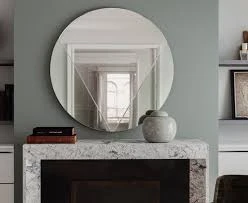

Tempered safety glass, also known as toughened glass, has become a fundamental component across various industries due to its enhanced strength and safety features. The manufacturing process of tempered glass involves heating it to high temperatures and then rapidly cooling it. This method not only increases its strength compared to regular glass but also enhances its resistance to thermal stress. As a result, tempered glass is four to five times stronger than standard glass of the same thickness, making it ideal for applications where safety and durability are paramount.
One of the most significant benefits of tempered safety glass is its ability to shatter into small, blunt pieces when broken, as opposed to larger, sharp shards that can cause serious injuries. This characteristic makes it an excellent choice for environments where safety is a concern, such as in vehicles, shower doors, glass doors, and facades of buildings. The reduced risk of injury in case of breakage makes tempered glass a preferred option for residential, commercial, and industrial applications.
In addition to its safety features, tempered glass also provides considerable aesthetic appeal. It is available in various finishes and can be customized to fit different design needs. The clarity and bright appearance of tempered glass make it suitable for architectural projects where unobstructed views and natural light are desired. This versatility has led to its widespread use in both modern and traditional designs.

Furthermore, tempered safety glass is energy-efficient. It can effectively insulate buildings and reduce energy costs by minimizing heat loss. Many models are treated with coatings to enhance their thermal performance, contributing to sustainable building practices. As the demand for energy-efficient materials increases, the popularity of tempered glass in the construction industry continues to grow.
From a regulatory perspective, tempered safety glass must comply with strict standards and codes to ensure its safety and performance. In many regions, building codes mandate the use of tempered glass in specific applications, underscoring its importance in construction and design. Manufacturers often adhere to rigorous testing protocols to ensure that their products meet these safety requirements, providing peace of mind to consumers and builders alike.
In conclusion, tempered safety glass is an invaluable material that combines strength, safety, aesthetic appeal, and energy efficiency. Its ability to withstand impacts and thermal stress while minimizing the risk of injury makes it essential in various applications. As innovation continues in the field of glass production, tempered safety glass is poised to play an increasingly important role in the future of construction and design.